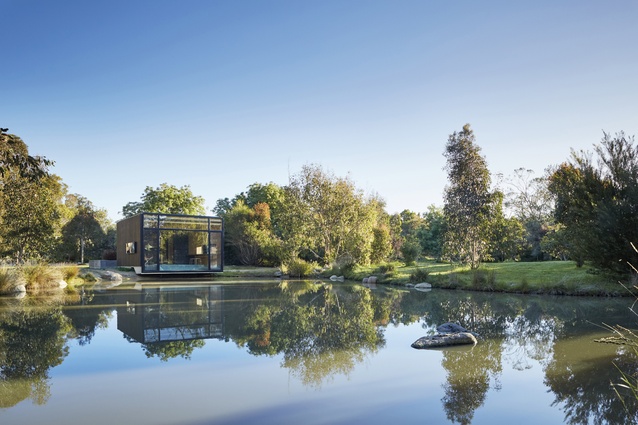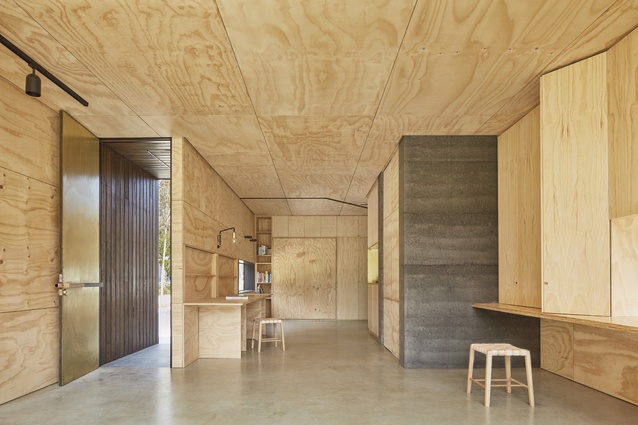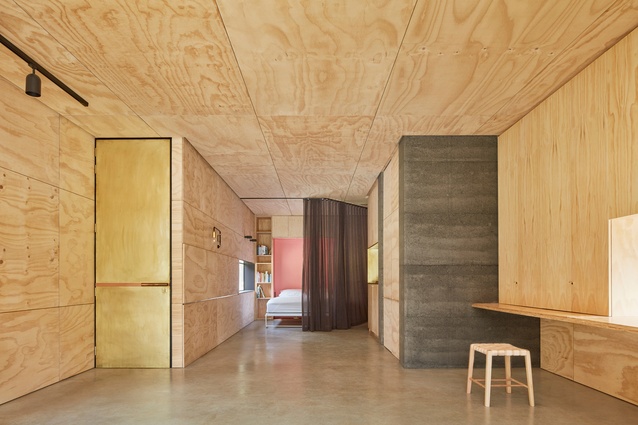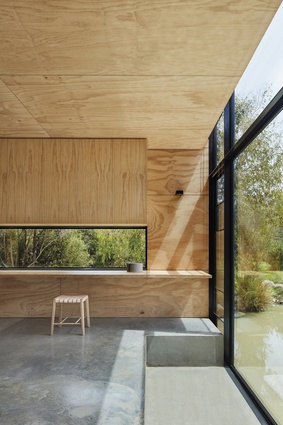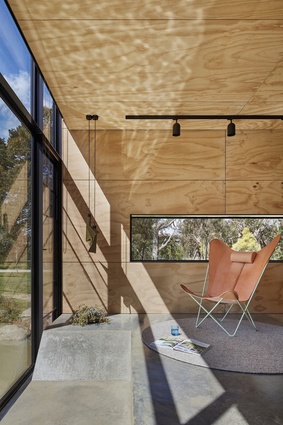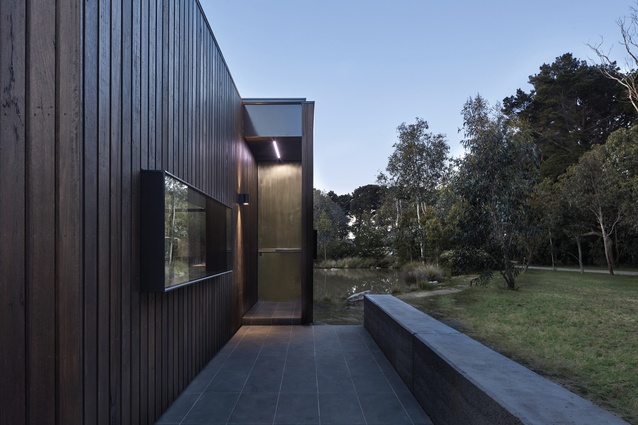Reflections by the pond
A meticulously crafted, small building that is constantly transformed both manually and by the natural light and waters that surround it.
Richard Sennett in his 2008 book The Craftsman posed two ideas about craftsmanship that almost perfectly describe the ethos behind this space. Craftsmanship is the “intimate connection between hand and head” and “making is thinking,” says Sennett.
And yes, this process of making offers opportunities for pleasure, thought and reflection and cultivates an active engagement with the material world. Balnarring Retreat on Mornington Peninsula in Victoria, Australia, is a building that has been thoughtfully and meticulously crafted to enable the owner to manually adapt the interior for their desired activity.
Designed by Branch Studio Architects, Balnarring Retreat is the tranquil getaway of a recently retired commercial pilot; she and her husband have their main residence on the same property. The client’s original brief was simply for a retreat; however, it was up to Nick Russo, director and architect at Branch Studio, to determine what that meant.
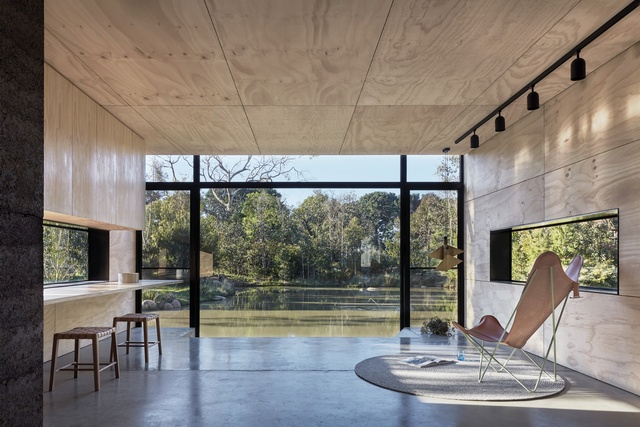
“The client was so carefree that it allowed me to explore things without too much resistance or even questioning,” he says. “As we progressed, there was a long list of things that may or may not happen in the space, which meant the brief and requirements for the project kept evolving.”
In the end, the 60m2 retreat would be a place to read, knit, work, practise yoga, host friends and family and sometimes sleep. “It needed to be nothing and everything, which is why the design response was to create a space that could adapt to many possible programmes,” Russo says.
Russo conceptualised the retreat as “a slow building for slow living” and incorporated this flexibility into the architecture with a low-tech approach to its mechanics and operability. A series of integrated elements can be opened and closed to adapt the space to its desired programme.

“The inhabitant must fold and unfold the various components by hand, mindfully manipulating the space they inhabit and consequently becoming a part of the building, not the master of it,” says Nick.
A bed folds down from the south wall; a series of flaps on the east wall unfold to create a long table or desk, revealing shallow storage behind; and the kitchen, workspace and hidden door to the bathroom are accommodated on the west wall.
The sunken area in front of the large glazed wall serves as a day-bed, and custom-made plywood boxes can be used to fill this space to create a level floor or to provide additional tables and seating for guests.
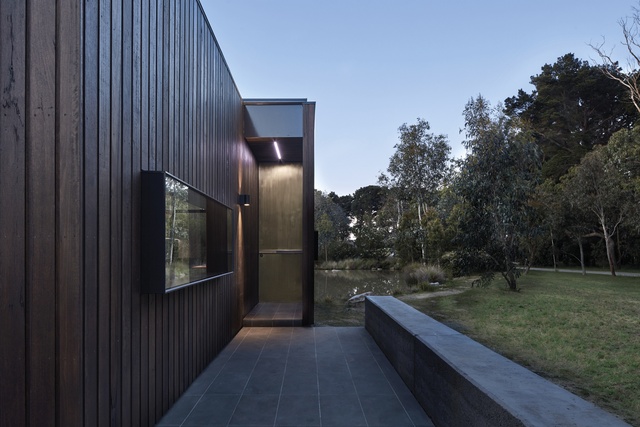
“You’re already retreating by setting up the space as you want it, and you become involved with the architecture, rather than just being in it,” Nick explains. The brief also entailed that the retreat sit on the banks of the existing pond and have a constant connection to nature. With sensitivity to where and how the building is placed on the site, its position has been determined by the direction and angle of sunlight, the view, accessibility and surrounding vegetation.

Appearing to sit lightly on the land, the retreat is visually anchored by the charcoal rammed-earth wall enclosing the bathroom at the rear of the building. The timber-clad volume then stretches to and beyond the bank where the concrete slab descends over the slope to hover above the water. Inside, untreated and uncoated plywood is tactile and aromatic, contributing to a sensory experience that is more than just visual.
The close connection with nature is also forged through the placement and alignment of windows, allowing for curated views from inside, outside and through the building. And in contrast to the rammed-earth walls of the bathroom, which foster a darker and more monolithic space, the glass ceiling enables a connection with the sky, clouds and stars.
“We had lots of one-to-one connections with the environment. This was about taking a broader view,” says Nick. With these strong links to the nature of the site, the atmosphere of the retreat is directly influenced by its surroundings as it reflects the ever-changing conditions outside. Whether blue skies and sunshine or wind and rain, nearby vegetation casts shadows across the exterior of the building, and the water refracts moving light across the interior.

“Although it is a still, slow building, there is a motion to it as shadow and light dance on the surfaces and constantly engage your eye,” Nick describes. Balnarring Retreat is a space that can be manually transformed by its owner and atmospherically transformed by the local environment and climate.
Craftsmanship and material integrity have been crucial in achieving both, and the result is a space that offers opportunities for pleasure, thought and reflection, as well as an active engagement with the physical world. “The scale of this building gave us the opportunity to focus on every little detail and to deliver the purest form of the concept in the real world,” Nick says.
For a full interview with Branch Studios, see here.

